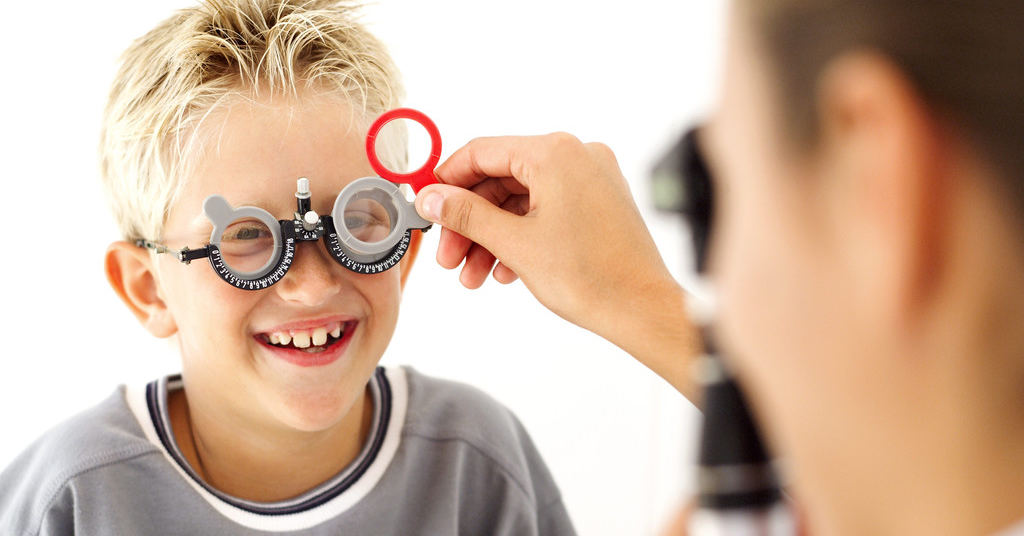How Young Is Too Young To Take Your Child To The Optometrist?

Vision problems are sometimes the last issue to be weighed when a child shows developmental delays. In fact, vision deficits can seriously compromise the rapid rate at which children progress and learn.

Research tells us that 5-10 percent of pre-schoolers have vision problems, and the number jumps to 25 percent of school-aged children. The problem is serious, because sometimes unidentified vision problems such as ‘lazy eye’ or amblyopia can cause permanent visual deficits. In infancy, connections are formed between a child’s eyes and brain. Development of those vital connections is disrupted when one or both eyes do not track properly. When images are unclear, the brain suppresses or ignores the information needed to build connections with the eyes for proper vision. The ‘lazy eye’ then becomes weaker, losing vision strength.
Common visual problems like near-sightedness, far-sightedness and astigmatism are easily corrected with glasses, if they are identified. In a toddler, they may not be identified unless you schedule a visit to an optometrist. If these common refractive errors are present very early, the brain ignores blurred signals and does not form proper connections with the eyes. Varied vision strengths, such as extreme near-sightedness in one eye and not the other, can cause the same sort of permanent vision loss as amblyopia, because the brain will learn to disregard the weak signal from the myopic eye.
The American Optometric Association recommends an infant’s first comprehensive eye exam at six months of age. The next exam should be at age three, and then just before the child enters kindergarten or first grade. Once school has started, a child with no detectable vision problems should have an exam every two years. Children with glasses or contacts are required to have a yearly visual examination at offices such as All About Eyes.
Learning in school requires some basic visual abilities. The child should have proper:
Vision conditions can result in many barriers for children, scholastically, socially and in athletic endeavors. Children with vision problems are sometimes labeled as uncoordinated or inept in math or reading.
Awareness and intervention for common vision problems can help a child reach full potential in school and adulthood.
